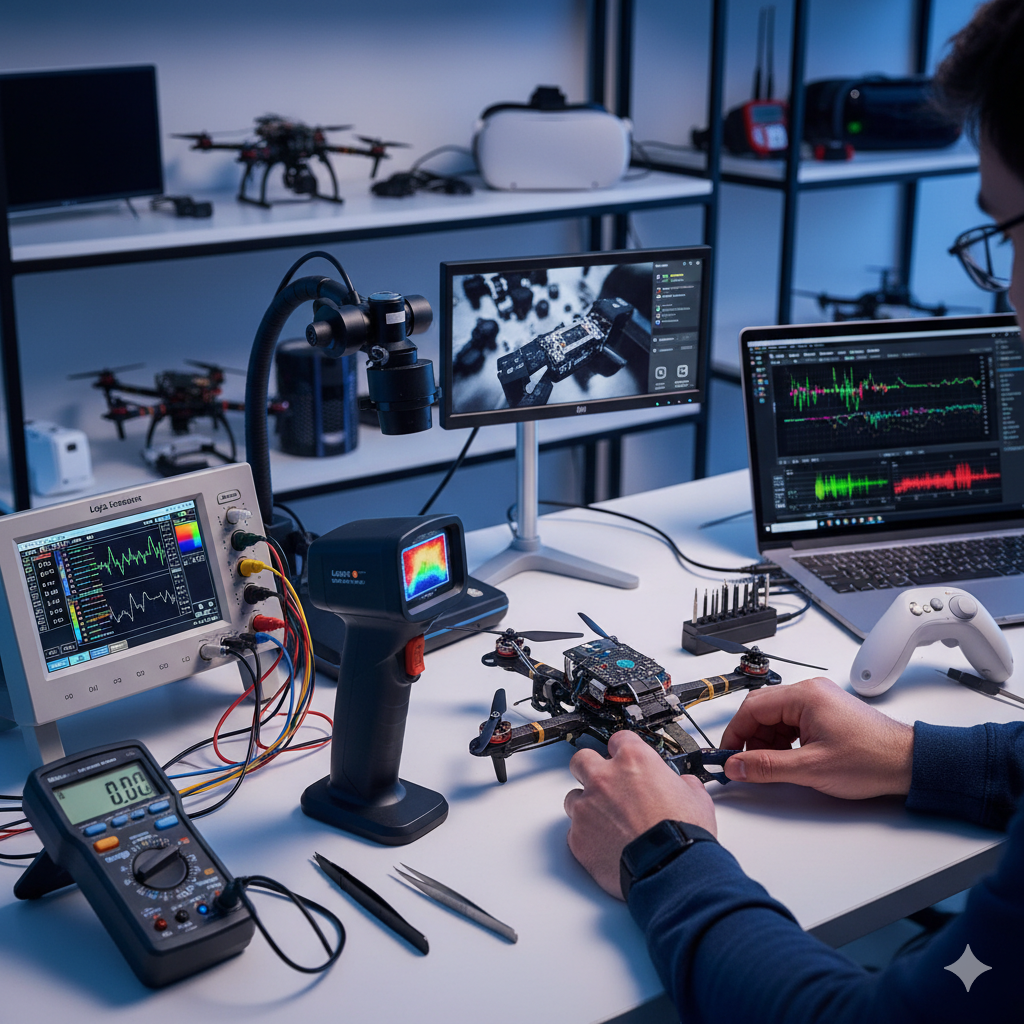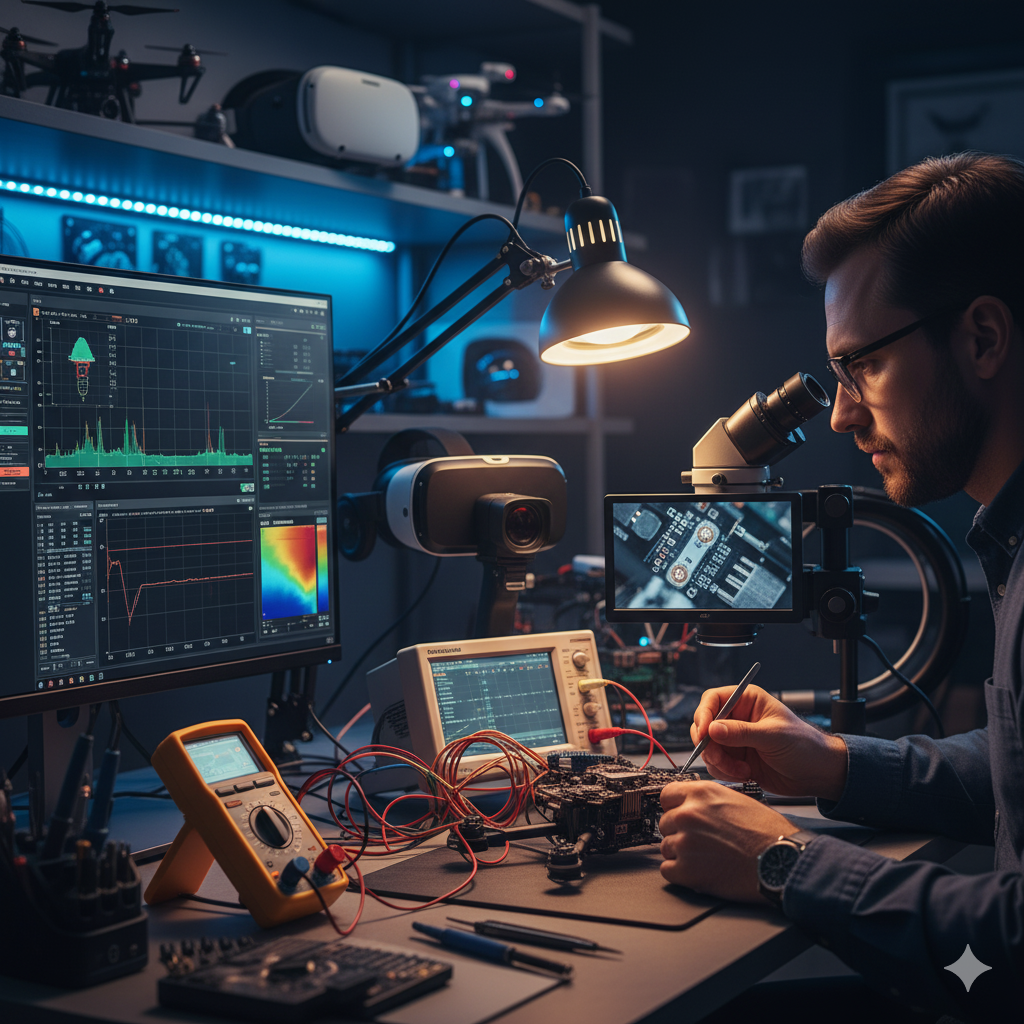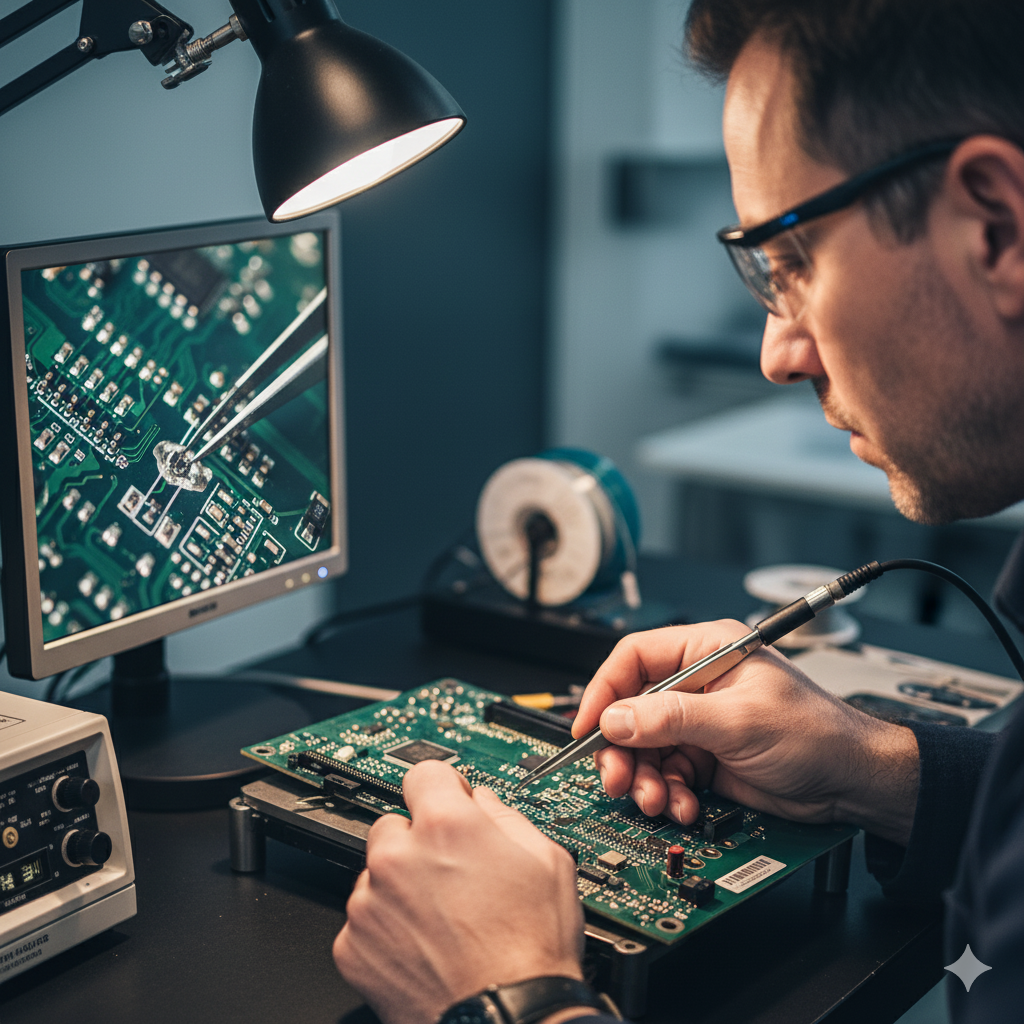
The world of technology is evolving at an unprecedented pace.
Gone are the days when a multimeter and a trusty soldering iron were all you needed.
Today’s troubleshooters face a landscape dominated by intricate drones, immersive VR headsets, and an ever-expanding array of smart devices.
To keep up, our diagnostic toolkit needs a serious upgrade.
This isn’t about ditching the basics entirely, but rather augmenting them with specialized instruments designed for the nuances of modern electronics.
The Rise of the New Era Gadgets
Consider the complexity of a modern drone.
It’s a marvel of engineering, combining sophisticated flight controllers,
GPS modules,
high-resolution cameras,
and
advanced communication systems,
all packed into a compact,
lightweight frame.
A single fault could stem from a software glitch, a sensor malfunction,
a power delivery issue, or even a subtle antenna problem.
VR devices, with their high-refresh-rate displays, precise motion tracking, and often wireless communication, present another layer of diagnostic challenges.
Traditional methods often fall short when pinpointing the root cause in such integrated systems.
Here, we’ll explore the essential diagnostic tools that every modern troubleshooter needs to navigate this exciting, yet challenging, technological terrain.

Videos will be added as random thoughts 💭 💭
1. The Logic Analyzer: Peering into the Digital Conversation
While an oscilloscope shows you analog waveforms, a logic analyzer is your window into the digital world.
Modern devices communicate extensively using digital protocols like I2C, SPI, UART, and USB.
When a device isn’t responding or behaving unexpectedly, a logic analyzer allows you to capture and decode these digital signals, showing you the exact sequence of bits being transmitted.
Why it’s essential: Identifying incorrect command sequences, timing issues, or data corruption in communication between microcontrollers, sensors, and peripherals is crucial.
For drones, this could mean diagnosing why a GPS module isn’t talking to the flight controller.
For VR, it might reveal why a tracking sensor isn’t sending data.
Key features to look for: High sampling rates, a good number of channels, and built-in protocol decoders are invaluable.
2. The Thermal Camera: Unmasking Hidden Hotspots
Overheating is a silent killer of electronics.
Components under stress, short circuits, or inefficient power delivery often manifest as localized hotspots on a circuit board.
These are often invisible to the naked eye but glow brightly on a thermal camera.
Why it’s essential: Quickly identifying overheating components in compact devices like drones (where motors and ESCs can generate significant heat) or VR headsets (due to powerful processors) can prevent catastrophic failure.
It can also pinpoint short circuits without the need for extensive probing.
Key features to look for: Good thermal sensitivity, a decent resolution, and the ability to capture images or video are beneficial.
3. Software-Defined Radio (SDR) and RF Spectrum Analyzer:
The Invisible Airwaves
Wireless communication is fundamental to almost every new-era device, from drone controllers to VR tracking systems and smart home gadgets.
Interference, weak signals, or misconfigured antennas can cause myriad problems.
An RF spectrum analyzer, often implemented via an SDR dongle and software, allows you to visualize the radio frequency environment.
Why it’s essential: Diagnosing Wi-Fi dropout issues in a smart device, poor range on a drone controller, or interference affecting VR tracking can be easily done by observing the spectral landscape.
You can see competing signals and ensure your device is transmitting cleanly.
Key features to look for: Wide frequency range, good dynamic range, and user-friendly software for spectrum visualization and demodulation.
4. Advanced Multimeter with Data Logging and Low-Ohm Measurement:
The Classic, Reimagined
While basic multimeters are foundational, modern troubleshooting demands more.
A multimeter with data logging capabilities allows you to monitor voltage,
current, or resistance over time, capturing intermittent faults that are otherwise impossible to catch.
Low-ohm measurement (milliohms) is critical for checking connections in high-current paths, like those found in drone power distribution boards or battery packs.
Why it’s essential: Intermittent power drops, subtle changes in sensor output over time, or minute resistance increases in power traces can be critical for drones and VR.
Data logging helps catch these elusive issues.
Key features to look for: True RMS, high accuracy, data logging to internal memory or PC, and low-ohm (mΩ) measurement capabilities.
5. USB Power Meter/Tester: The Lifeline of Modern Devices
Most modern portable devices charge and communicate via USB.
A USB power meter is an inexpensive yet incredibly useful tool for diagnosing charging issues, power draw problems, and even basic data line integrity.
Why it’s essential: For VR headsets, drones, and other USB-powered gadgets,
this tool can tell you if a device is drawing the correct current,
if the charger is supplying enough power, or if there’s a problem with the USB cable or the device’s charging circuitry.
Key features to look for: Voltage and current display, mAh/Wh accumulation, and sometimes data line monitoring.
6. Dedicated Device Diagnostic Software & Firmware Tools:
The Manufacturer’s Edge
Often, the most powerful diagnostic tools are provided by the manufacturers themselves.
For drones, this means flight controller configurators
(like Betaflight Configurator,
ArduPilot Mission Planner) that allow you to calibrate sensors, monitor real-time data, flash firmware, and view blackbox logs.
For VR devices, PC-based software can often perform deep diagnostics, firmware updates, and sensor recalibration.
Why it’s essential: These tools offer unparalleled insight into the internal workings of the device,
allowing you to bypass hardware probing for many software-related or configuration issues.
Blackbox logs, in particular, are invaluable for post-flight drone crash analysis.
Key features to look for: Real-time data monitoring, logging, calibration utilities, and firmware flashing capabilities.

7. Micro-Soldering Station & Microscope: Precision for Miniaturization
With components getting smaller and smaller (think 0201 or 01005 packages), precise soldering and inspection are paramount.
A good quality micro-soldering station with fine tips and a dedicated microscope (or a high-magnification USB microscope) is no longer a luxury but a necessity for component-level repair.
Why it’s essential: Repairing tiny components on dense PCBs of drones or VR devices requires extreme precision.
A microscope allows for detailed inspection of solder joints, traces, and minute component damage.
Key features to look for: Temperature control, various fine tips, and optical magnification of 20x to 100x for a microscope.
The Modern Troubleshooter’s Mindset
Beyond the tools, the modern troubleshooter needs a flexible and analytical mindset.
The ability to integrate data from multiple sources – a thermal camera showing a hotspot,
a logic analyzer revealing a communication error, and manufacturer software flagging a sensor anomaly – is what truly sets apart a successful diagnostic expert.
Embrace continuous learning, stay updated with the latest technologies, and remember that sometimes the most complex problems have the simplest solutions, hidden by a layer of intricate technology.
By equipping yourself with these advanced diagnostic tools and cultivating a keen understanding of how modern devices operate,
you’ll be well-prepared to tackle the challenges of the new technological era, keeping drones flying,
VR experiences immersive, and all your smart gadgets performing at their peak.
Meta Description: Discover essential diagnostic tools for troubleshooting modern tech like drones and VR devices.
Go beyond basic electronics with thermal cameras, logic analyzers, and RF spectrum analysis for effective repairs.
Infographic Content (for Pinterest):
Title: Essential Tech Troubleshooter’s Toolkit (New Era Edition)
(Visually represent each tool with an icon)
Logic Analyzer
What it does: Decodes digital communication (I2C, SPI, UART).
Why you need it: Diagnose communication errors between chips in drones, VR.
Icon: Digital waveforms, microchip
Thermal Camera
What it does: Visualizes heat, identifies hotspots.
Why you need it: Pinpoint overheating components, short circuits in compact devices.
Icon: Heat map, thermometer
RF Spectrum Analyzer / SDR
What it does: Visualizes wireless signals and interference.
Why you need it: Troubleshoot Wi-Fi, Bluetooth, drone control link issues.
Icon: Radio waves, antenna
Advanced Multimeter (with Data Logging)
What it does: Measures voltage, current, resistance over time.
Why you need it: Catch intermittent power issues, subtle changes in sensor output.
Icon: Multimeter display, graph
USB Power Meter/Tester
What it does: Monitors USB power draw and data lines.
Why you need it: Diagnose charging problems, power consumption issues in USB-powered devices.
Icon: USB port, battery icon
Manufacturer’s Diagnostic Software
What it does: Deep device-specific diagnostics, firmware, calibration.
Why you need it: Unparalleled insight into internal workings, blackbox analysis for drones.
Icon: Computer screen with data, gears
Micro-Soldering Station & Microscope
What it does: Precision soldering and inspection of tiny components.
Why you need it: Repair dense PCBs, identify minute damage on modern miniaturized electronics.
